
By Rick VanSickle
It might be hard to believe that Niagara’s King and Victoria Winery only opened its doors is 2023 … after all, the groundwork was laid over two decades ago.
Also in this Ontario Wine Report: VQA approves long list of new grapes, including Roussanne, plus photos of Brock’s CCOVI Awards of Excellence.
For King and Vic owners, Rob and Liz Harold, and Joe and Tracey Schenck, their story begins in the vineyards.
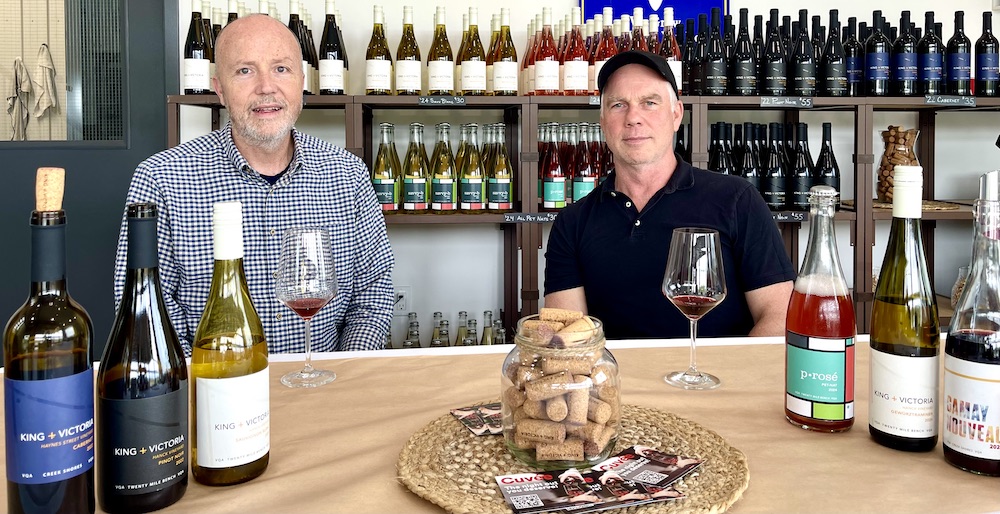
The 20-acre Hanck Vineyard, where the estate winery is located on the Twenty Mile Bench and shares a border with the Wismer Vineyard to the south, was purchased in 2002 by the couples with 13 acres planted from 2004 to 2007 with Gewurztraminer, Riesling, Sauvignon Blanc, Pinot Noir, and an additional 1.25 acres of Pinot Noir planted in 2021 .
The Haynes Street Vineyard, located in the Creek Shores sub-appellation in nearby Jordan, is owned by the Schencks and was planted in 2000-2001 to Cabernet Sauvignon, Cabernet Franc and Gamay.

The Schencks also own the Upper Farm Vineyard, a 20-acre Chardonnay vineyard in the Creek Shores sub-appellation that was integrated into the King and Vic portfolio beginning with the 2023 vintage.
Before the couples decided to leap into the winemaking business, the fruit from Hanck was sold to premium local wineries and the name has appeared proudly on bottles of single vineyard expressions from Cloudsley Cellars to Bachelder Wines. While most of the grapes are still sold to other wineries, King and Vic now takes some of it for their own project.
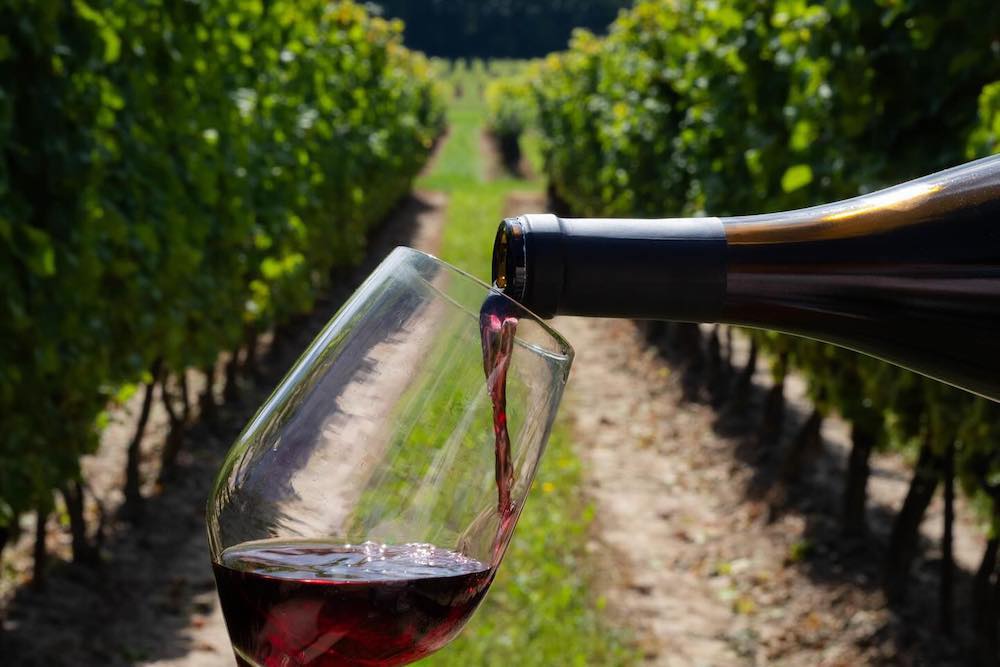
The families, the vineyards and the winery are intricately linked in more ways than one. While the first vintages were made off-site at neighbouring Cloudsley Cellars, all winemaking, along with tastings and retail, take place at the winery. The intimate tasting and retail facility has a picturesque view of the vineyard while you sip and chat with one of the owners always in attendance.
All the wines now are crafted exclusively in house by Harold and Schenck, who both have backgrounds in amateur winemaking. “The plan is for a small-scale, artisanal, low intervention winery and to make what we can manage,” said Schenck in a previous interview with Wines in Niagara. “It’s just fun to have a vineyard and winery to play around.”
I sat down with the always accommodating Rob Harold, and Joe and Schenck recently to taste through some new releases. Here’s what I liked:
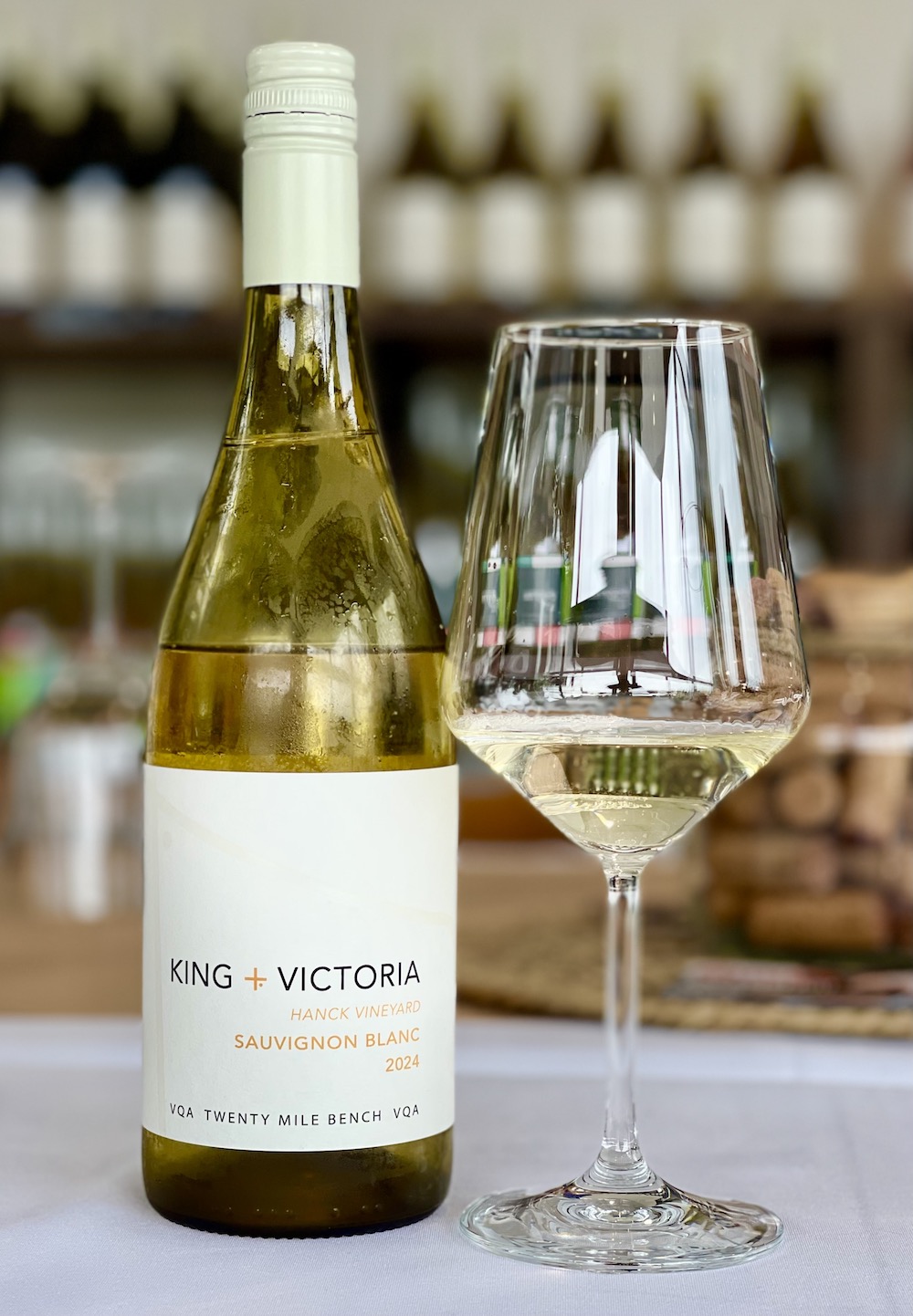
King and Victoria Hanck Vineyard Sauvignon Blanc 2024 ($ 30, 92 points) — The fruit is from 18-year-old estate vines. The grapes are hand-picked, and wild fermented in stainless steel. Notes of grapefruit, kiwi, pear, herbs and grass jump from the glass on the nose. It’s fresh and vibrant on the palate with crisp citrus fruits, pear, garden herbs and mouth-watering acidity on the finish.
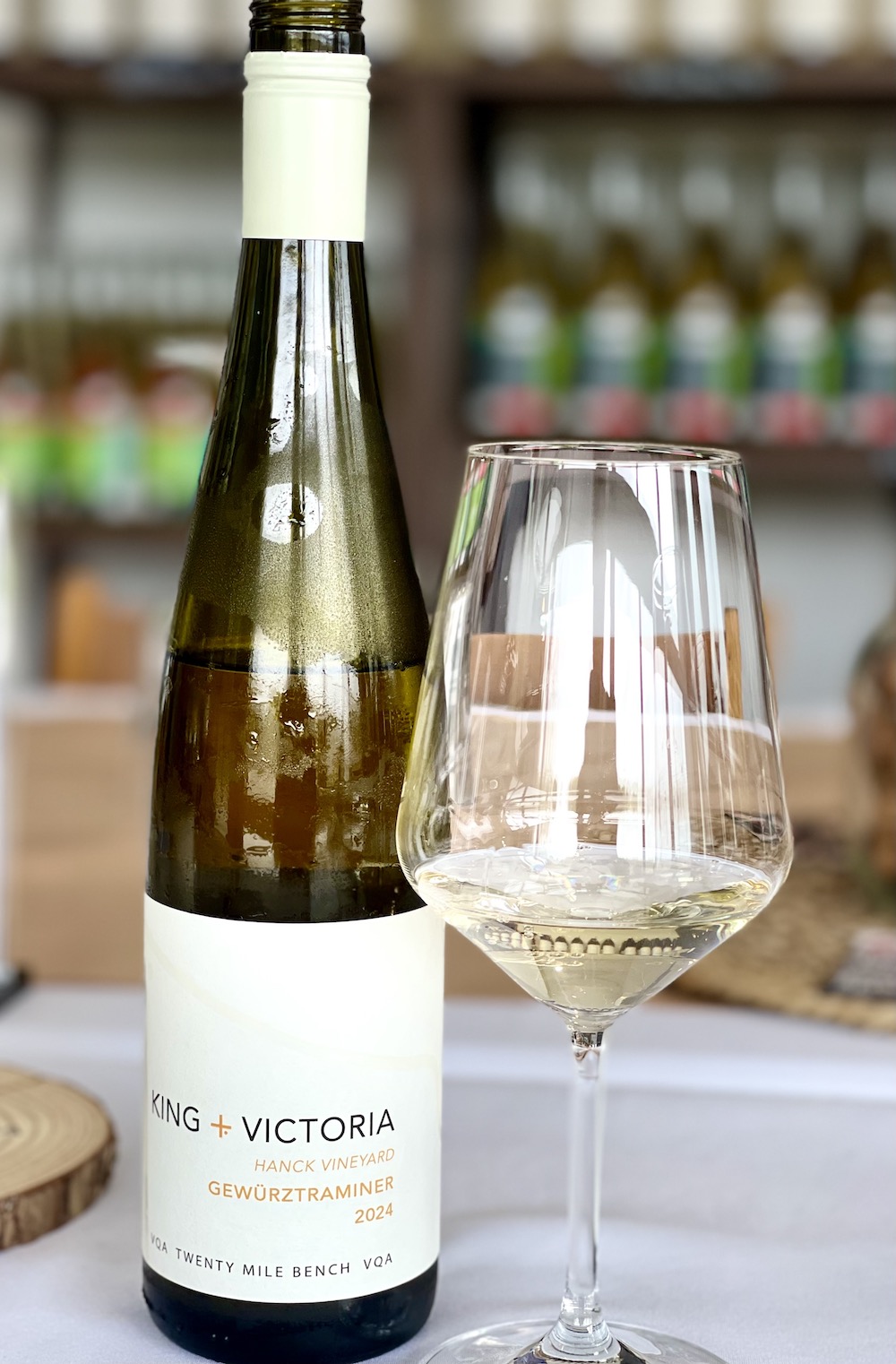
King and Victoria Hanck Vineyard Gewurztraminer 2024 ($ 30, 91 points) — Though the winery has sold their Gewurztraminer grapes since they were planted in 2004, this is the first estate version King and Vic has made. It starts with lovely Asian pear, lychee, ginger, rose petals and mango. “We don’t really like flabby wines,” said Harold, “we like the acid.” It’s tricky to get that balance with this grape but it has been achieved here with 3.8% residual sugar and 13% abv. It’s bright and vibrant on the palate with juicy acidity followed by ripe pear, grapefruit, lychee, ginger and marzipan with a zippy finish in a bone-dry style.

King and Victoria p-rosé Pet-Nat 2024 ($ 30, 88 points) — This Pinot Noir Pet Nat (Petillant Naturel) is a naturally effervescent wine made using the ancestral method where the wine completes primary fermentation in bottle under a crown cap. After fermentation, the wine goes straight to bottle with no sulphur added. It shows a healthy bubble in the glass with fresh red berries, red currants, a touch of cassis and quite clean and pure. There’s a touch of earthy funk on the palate but essentially shows fresh raspberries, cherries and just a hint of savouriness on the bright, lifted finish. This is also bone dry with 12% abv.

King and Victoria Hanck Vineyard Pinot Noir Rosé 2024 ($ 30, 89 points) — The Pinot Noir Rosé is the still version of the same wine above but made in a more traditional way. It has a fresh nose of Morello cherries, fresh, summer raspberries, strawberries, floral notes and red currants. It has lovely texture on the palate with fresh red berries, a touch of anise and mouth-watering acidity on the finish.
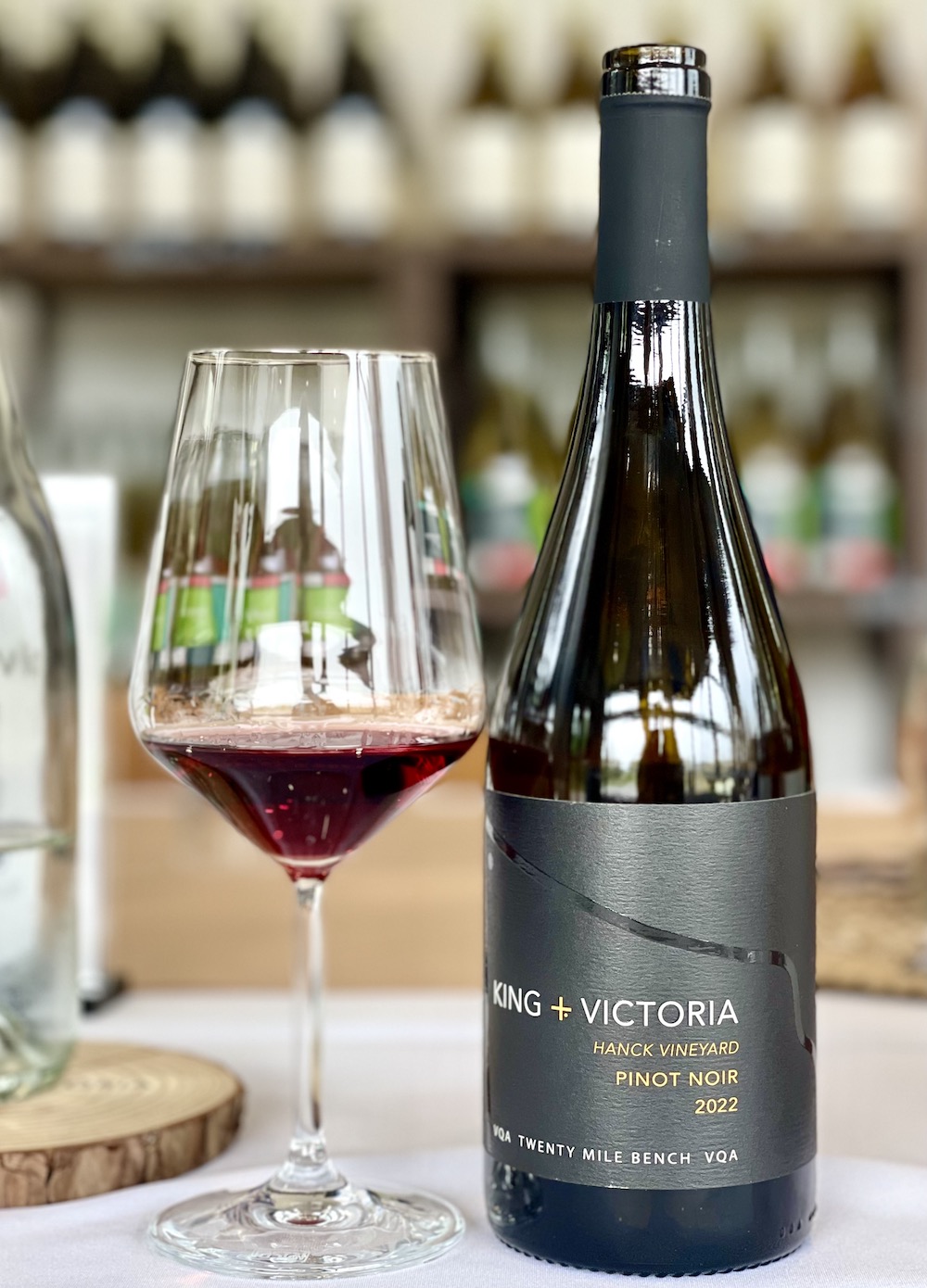
King and Victoria Hanck Vineyard Pinot Noir 2022 ($ 55, 92 points) — From the extremely low yield 2022 vintage, this is a mix of three estate Pinot clones from 16-year-old low yielding vines. It was hand-picked, hand-sorted, wild fermented and aged for 21 months in French oak (20% new oak). It has a light ruby colour in the glass with a nose of dark cherries, ripe black raspberries, a touch of anise and earthy/spicy notes. It is nicely balanced on the palate with a silky texture and showing a melange of red fruits, earthy notes and spice with a vibrant, lifted and echoing finish. Can cellar through 2032.
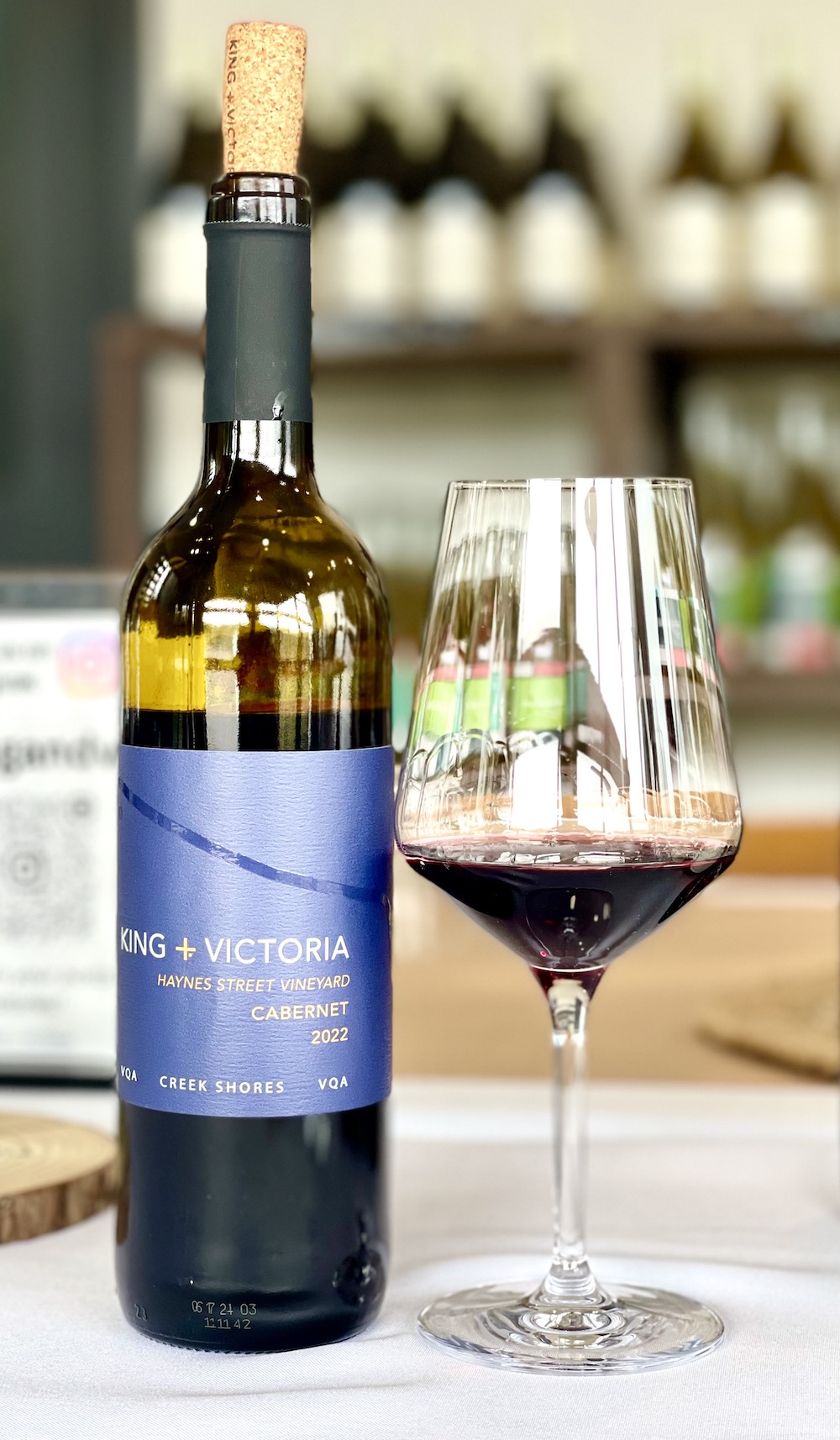
King and Victoria Haynes Street Vineyard Cabernet 2022 ($ 35, 92 points) — The fruit for this red blend of 60% Cabernet Franc and 40% Cabernet Sauvignon is from Tracey and Joe Schenck’s vineyard in Jordan. It’s wild fermented and undergoes natural malolactic conversion before aging for 20 months in French oak barrels (25% new). Such an enchanting nose of ripe red berries, cassis, black currants, floral notes and elegant spices. It shows structure on the palate with polished tannins, red and dark berries, some earthy savoury notes, lovely spice accents and zippy acidity to keep it all fresh and lively on a long finish. Very nice red wine that you can cellar through 2034.
VQA approves long list of new
grapes, including Roussanne
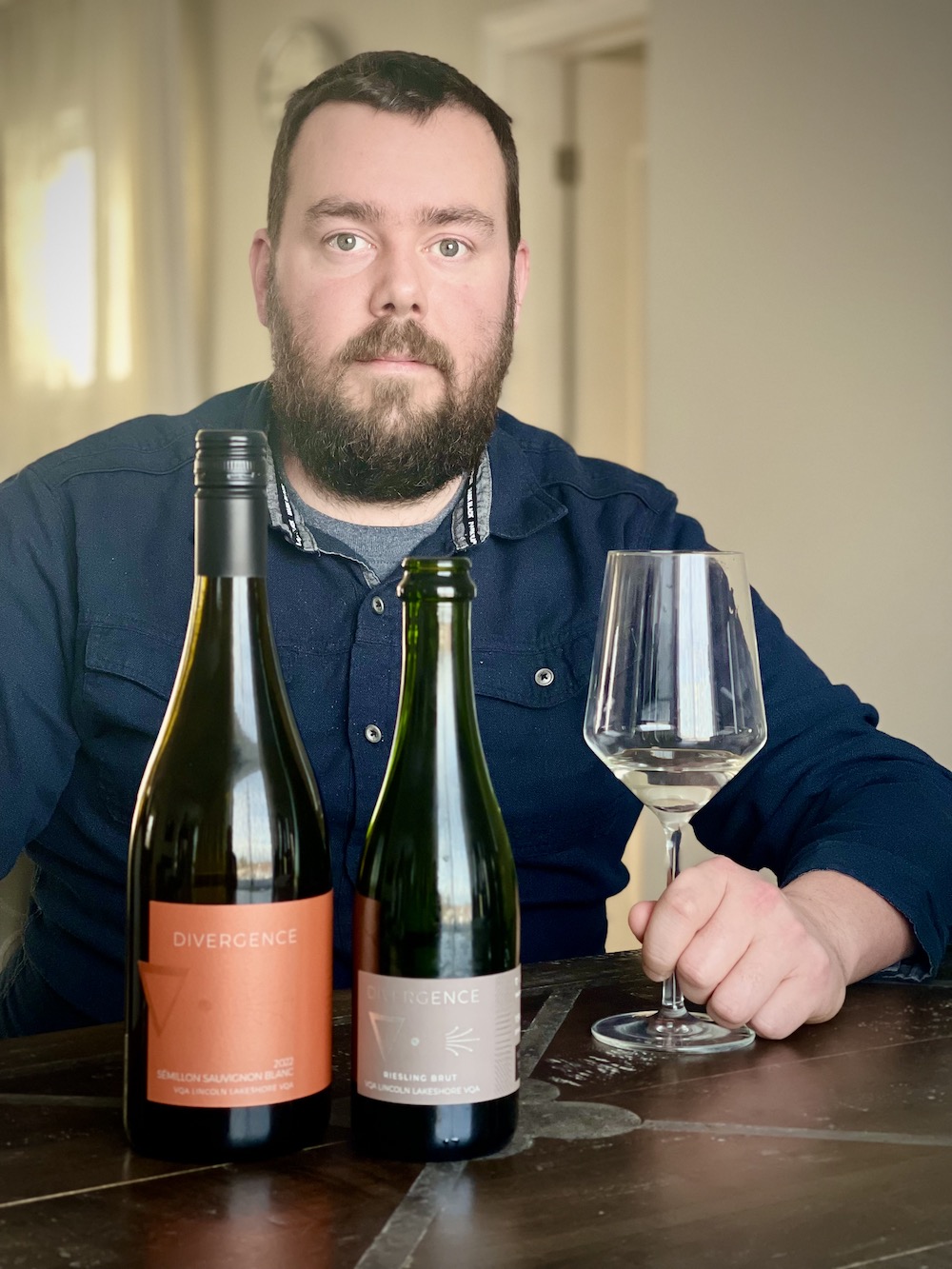
At long last, the Ontario government has approved a regulation amendment and has added a long list of new grape varieties to be eligible for the VQA badge. The list of vinifera and hybrids can now be selected in new VQA approval applications starting immediately, according to VQA Ontario. “This is a preview announcement — we are expecting that Minister Stephen Crawford will make a formal announcement later in June,” VQA said in its June newsletter.
You can see the full list of VQA eligible grapes here, but one approval caught our attention.
A few wineries have been growing Roussanne (the natural partner for the already approved Marsanne grape) and a couple of winemakers have either a Roussanne already made and awaiting approval, or it is completely bottled and are raring to go.
Jeff Moote (above), who owns the brand Divergence Wines, has had a Marsanne, Roussanne, Viognier blend called MRV in bottle for over a year while waiting for VQA status.
“My wine has been bottled and labelled, ready to go since last year, as soon as we had the green light,” Moote told Wines in Niagara. “Now that the change is finally approved, the wine has been sent to VQA and I’d expect within their normal turnaround of a couple weeks I’ll be able to sell it.”
If it gets turned around quickly from VQA it will be the first VQA Roussanne blend approved in Ontario. Wines in Niagara reviewed it last year and it received 94 points, and it was named one of 10 wines on the Wines in Niagara’s Most Thrilling White Wines of 2024 list.
Here’s what we had to say about the wine when tasted a year ago:
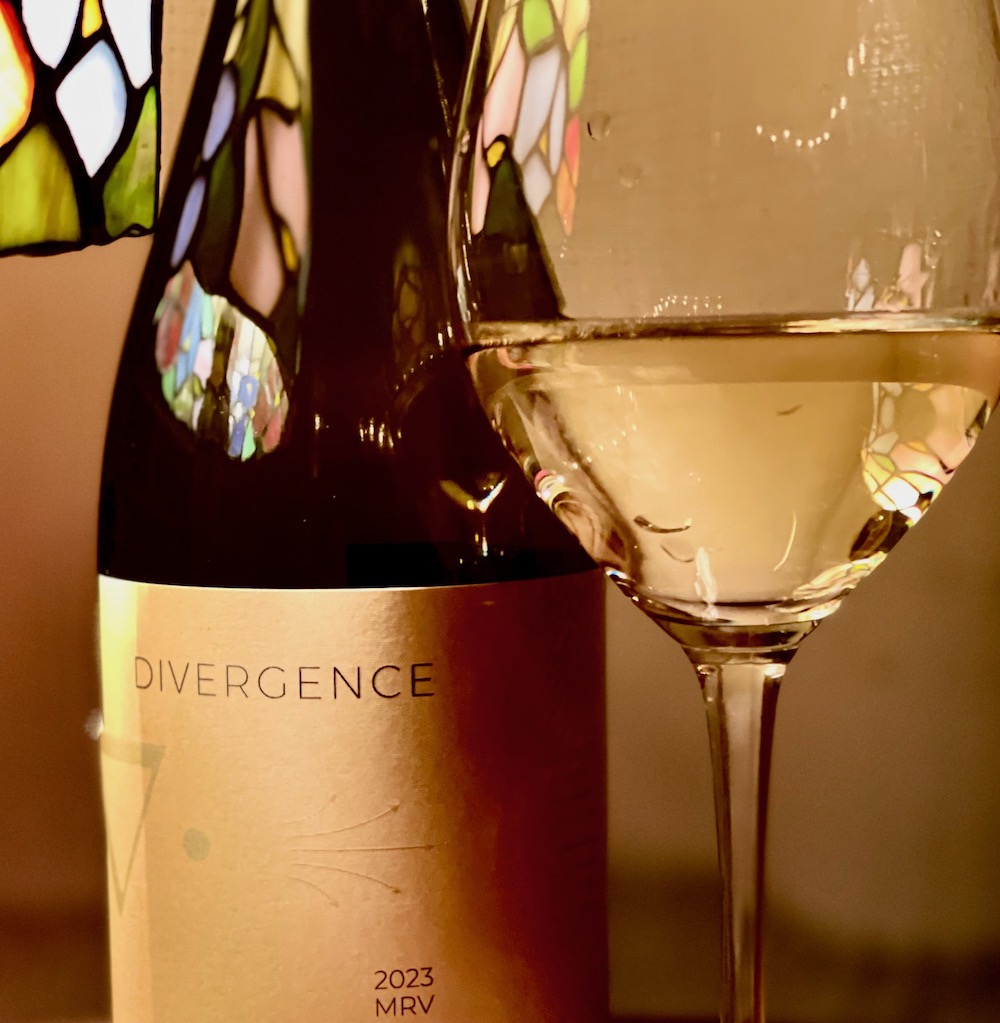
Divergence MRV 2023 ($ 33, released through Collab Wine and Beverage, 94 points) — Roussanne makes up 32% of this Rhone variety blend that will have over a year in bottle when it finally gets released in the next month or so. The rest of the blend includes 39% Marsanne and 29% Viognier from the Bock Vineyard on the St. David’s Bench. Black Bank Hill is also waiting on approval for Roussanne, which somehow wasn’t approved along with Marsanne years ago. With latest news, the winery says it plans on bottling a 100% Roussanne this July, and is part of a blend now waiting to be bottled. “It will be cool to be one of the first with a Roussanne containing wine in VQA, along with Black Bank Hill as likely the other that will have one ready to go as soon as we get the green light,” said Moote. The Viognier was pressed separately, while Marsanne and Roussanne were pressed together on top of the Viognier skins. It was all whole cluster pressed, juice was settled and racked to barrel for fermentation and aging for 10 months (no new oak) before blending and bottling. This a more traditional three-variety Rhone blend that is just gorgeous, exciting even, with a generous, rich nose of apricots, guava, orange zest, saline minerality in spades, wild herbs, marzipan, lemon curd, and a touch of vanilla spice. It has a creamy texture on the palate with succulent tropical fruits, apricot tart, lemon squares, orange peel, cantaloupe, wild honey, saline freshness and a rounded, luxurious finish with mouth-watering acidity. These Rhone varieties are going to shake up the industry if this is an indication. Lovely wine, finally ready for its big debut.
The Cuvée Awards of Excellence winners
The 33rd edition of the Cuvée Grand Tasting was the setting for the Cuvée of Excellence Awards on May 24. Wines in Niagara detailed the winners in a previous post but just received the photos from the gala event.
Presented by Brock University’s Cool Climate Oenology and Viticulture Institute (CCOVI), the fan-favourite affair drew more than 500 guests for an evening featuring selections from the province’s top winemakers combined with delicious food pairings from the region’s leading chefs.
The evening was an opportunity for CCOVI to honour current and future members of the industry, with eight awards presented.
The Cuvée Vineyard of Excellence Award — honouring a grower who promotes excellence in their vineyard — went to Tom Wiley of Wiley Vineyards in Jordan, Ont., while the Cuvée Winemaker of Excellence Award was presented to Thomas Bachelder of Bachelder Niagara in Beamsville, Ont.
The Tony Aspler Cuvée Award of Excellence was presented to photographer Steven Elphick, who is well known for his wine images throughout Ontario.
The remaining awards — made possible thanks to the Cuvée Legacy Fund, which supports scholarships in Brock’s undergraduate Applied Grape and Wine Science programs as well as graduate degrees in oenology, viticulture, wine science, business and tourism — honoured five students. Here are the photos (all Brock News photos) and presenters of the winners.




The post The King and Vic story began long ago in the vineyard, plus new VQA grapes approved appeared first on Wines In Niagara.